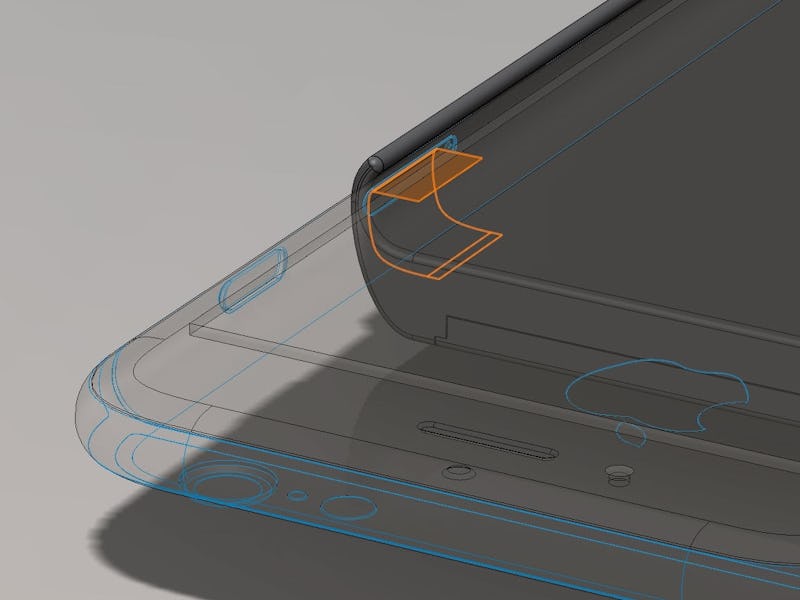Edward Snowden Helped Design This Privacy-Defending iPhone Case
The device would, theoretically, warn when an iPhone's radios are working.

Edward Snowden and Andrew “Bunnie” Huang have designed an iPhone case that would ensure the iPhone in your pocket doesn’t broadcast your personal data.
“If you have a phone in your pocket that’s turned on, a long-lived record of your movements has been created,” Snowden said on Thursday via teleconference during MIT Media Lab’s Forbidden Research event. “Your devices are constantly shouting into the air by means of radio signals a unique identity that validates you to the phone company. This unique identity is not only saved by the phone company but also can be observed as it travels through the air by independent third parties.”
Snowden and Bunnie, a well-known hardware hacker, have designed an iPhone case that they say lets people know whenever the device’s radios are activated. It could also — if the pair finds a way to make it work — be a radio “kill switch.” They’re calling it the “introspection engine” and, while it’s still just a theoretical device that might never become a reality, the device could start a conversation over just how much control we actually have over the devices we use every day.
A mockup of the 'introspection engine'
“Airplane mode is a ‘soft switch’”
The “introspection engine” is necessary even though the iPhone comes with Airplane Mode — which is supposed to turn off all the device’s antennas — because it’s possible to undermine that setting. Here’s what Snowden and Bunnie say about the dangers of Airplane Mode in the paper they published today about their design.
Turning off radios by entering airplane mode is no defense; for example, on iPhones since iOS 8.2, GPS is active in airplane mode. Furthermore, airplane mode is a ‘soft switch’ – the graphics on the screen have no essential correlation with the hardware state. Malware packages, peddled by hackers at a price accessible by private individuals, can activate radios without any indication from the user interface; trusting a phone that has been hacked to go into airplane mode is like trusting a drunk person to judge if they are sober enough to drive.
The introspection engine was designed to stop what Snowden and Bunnie call lawful abuses of surveillance capabilities. These violations of privacy are seen as legal — much like the mass surveillance programs Snowden revealed in 2013 — but they are also used for nefarious purposes. The duo is especially concerned about protecting journalists who might be targeted by government forces because of a story they’re working on, as Snowden explained at the event.
“One good journalist at the right place at the right time can change history,” he said. “This makes them a target, and increasingly the tools of the trade are being used against them. Our technology is beginning to betray us not just as individuals but also as classes of workers. This new device was designed to stop the tools journalists need to function their smartphones — from being used by government forces to find, target, and even kill reporters they want to silence.”
Right now the introspection engine is just a concept. “Over the coming year, we hope to prototype and verify the introspection engine’s abilities,” the duo writes. “As the project is run largely through volunteer efforts on a shoestring budget, it will proceed at a pace reflecting the practical limitations of donated time.” But, they write, if funding becomes available they might eventually manufacture the device.
You can learn more about how the introspection engine works and what the team’s goals are for the project: